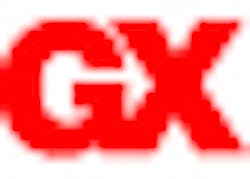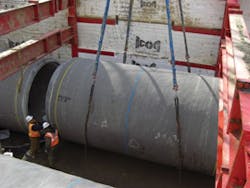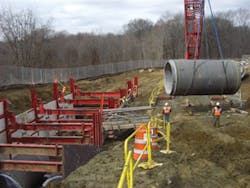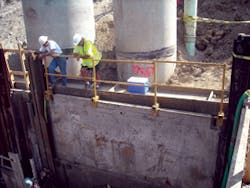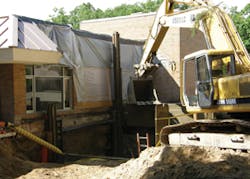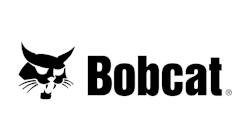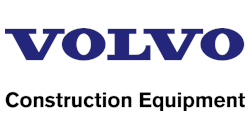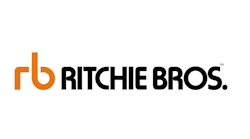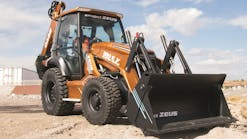Editor’s note: This article first appeared in Grading & Excavation Contractor magazine, September/October 2011.
Often touted as the most flexible shoring system available, the slide-rail system is a vertical sheeting and trench support system that allows an excavation to be safely and economically shored from ground level to subgrade without any soil movement. Arguably, the slide-rail system has become the preferred shoring method for contractors for long runs of larger-diameter pipelines by proving to cut time and labor costs versus conventional wood or steel sheeting methods. Slide-rail system end users will agree that its flexibility of design allows unlimited adaptations-and, according to manufacturers, virtually any configuration is possible using combinations of single, double, or triple slide rails, corner rails, side panels, and in-line sheeting templates.
“Installation of a slide-rail system requires a smaller crew, with components put in place and removed by an excavator,” says David Crandall, vice president of Icon, a full-service trench shoring and pilot tube guided boring company. “Modular beam-and-plate design provides flexibility and optimum use on a variety of jobs. There is no need for interior walers or beams, thus allowing for more working room and ease while digging. Slide-rail systems also allow multiple operations to be performed simultaneously to expedite work. We find slide-rail systems can lower shoring costs from 30% to 60% when compared to conventional systems.”
Dennis Parker, products manager for Griswold Machine & Engineering Inc. (GME), says that the contractor base is not as educated about slide-rail systems as it needs to be. “The systems are very detailed, and require manufacturer support in the equation to assist in specification for the given application. Depending upon the depth, site-specific engineering may also be recommended,” he says.
Gary Hicks, regional sales manager for Speed Shore, says that slide-rail systems require precision and skill during installation. “If one is new to the system, it’s good to have dealer or manufacturer field-technicians onsite for installation. Contractors should also have at least two pieces of equipment onsite to put slide-rails systems together. It can be two excavators or an excavator and a forklift, or an excavator and a rubber-tire backhoe to get the job started.
After the initial stage of installation, one machine can do the job,” he says.
When working on one of the world’s largest UV water treatment plants, SEW Construction used a triple slide-rail system. The project involved installing approximately 10,000 linear feet of encased pipe that ranges in outside diameters from 48 to 144 inches. A section of the massive pipeline required 9-foot-diameter, 20-foot-long prestressed concrete cylinder pipes (PCCP) to be installed in a very confined and deep section of the project. SEW contacted Icon of East Brunswick, NJ, to design and provide a triple slide-rail system that would be able to handle a maximum depth of 25-feet below ground level and over 30-feet in width.
“Because the contractor would install 20-foot sections of concrete pipe, we had to design the system accordingly, by using 20.5-foot-long lining plates for the required horizontal clearance and strong triple rail with large bracing for the 15-foot cantilever required under the bottom brace of the system. This would offer the pipe crew the proper clearance,” says Crandall.
The 20-foot-long sections of concrete pipe were set into the trench by a 275-ton crane. The weight from this crane added load and deflection to the sidewalls of the slide-rail systThe New York Shoring Consultant for Icon reports that the section of the slide-rail system itself was a six-bay, triple slide-rail trench that was 130-feet long, 32-feet wide, and 20-feet deep, designed in combination with benching and sloping to handle the overburden that would be encountered in certain areas. The contractor was also supplied with extra rail pairs for handling curves and turns in the pipe run.
“Dig and Push” System Fits in Tight SpotsEfficiency Production’s Universal Slide Rail is a component shoring system comprising s
When McCormick Sand Inc. of Muskegon, MI, took on the excavation of an elevator shaft for a local community college, the contractor encountered a challenge because the elevator shaft had to be built in the corner of two exterior walls accessing three underground floors. A 28-foot-deep excavation was required to pour in place the new concrete shaft.
Whatever shoring McCormick chose, it needed to be installed directly along the two perpendicular exterior walls where the elevator shaft was to be built. This severely limited the choice of shoring or shielding that was feasible. Ultimately the contractor consulted with Efficiency Production on the use of a slide-rail system.
Efficiency’s Ground Quick-Relase Shackle eliminates the dangerous task of manually removing shackles from the tops of the slide-rail posts.
Slide rail is installed simultaneously as the trench or pit is excavated by sliding the panels into integrated rails on the posts-an outside slotted rail first, then an open-face rail on the inside-then pushing the panels and posts incrementally down to grade as the pit is dug; a process commonly referred to as a “dig and push” system. Efficiency Production says it is the only slide-rail system manufacturer to offer an open-face rail design on slide-rail posts.
“I knew that our slide rail was going to work, because it is designed and engineered to be installed in the tightest of spots, and in all types of soil conditions,” says Efficiency’s slide-rail manager, Greg Ross. “For this project, we came up with a modified four-sided configuration that was open on one side against the wall, and we used linear posts and a parallel beam spreader assembly instead of panels against that wall.”
Ross was onsite for the initial installation. He says that the slide-rail system for this project is also unique in that it is designed to be partially removed as soon as it was to grade. When the entire system was completely installed to 28 feet, the corner posts were tied back with chains so that the panels and parallel beam assembly along the building’s perpendicular exterior walls; and the linear post in the buildings apex could be pulled up 16 feet to make room for the elevator shaft to be cast-in-place in stages. After setting an 18-inch-thick foundation slab, the concrete contractor poured 16-feet of the elevator shaft at which point the slide-rail system was backfilled and removed up to that point so the remainder of the shaft could be completed. The entire 14-foot-square, 12-inch-thick concrete shaft is 40-feet tall.
Although the slide rail went in the ground very smoothly, McCormick reported that it took them a long time to get the two sides of the system against the buildings foundation high enough to cast the first portion of the elevator shaft. Efficiency Production returned to the site to show the crew a better way to attach the chains to the post so that they could pull it up easier.
McCormick used a Caterpillar 345 to install the slide-rail system; then a John Deere 892 excavator to pull up the system’s components to make room for the elevator shaft and then eventually to remove the system entirely.
Open-Track Slide-Rail System
GME provides a full line of steel and aluminum trench shields and shoring that helps protect workers, improve productivity, and keep the contractor in compliance with OSHA regulations.
According to GME, its slide-rail system offers an open-track system that is more functional than other slide-rail systems. It allows for panels to be pivoted into place, more like a door, and then clamped into the linear rails before sliding into place. This is different from systems that thread panels into closed rails from overhead. The system’s self-adjusting rollers in a box frame strut ensure that the struts remain level as the excavation from within the trench is made and the slide rail is pushed to grade. GME maintains that this slide-rail system is one-half of the cost when compared with the use of tight-sheeting systems, and that fewer workers are required for its installation.
Rent Versus Buy
Lance Palmer recently blogged his thoughts on the rental versus purchase of slide-rail systems and other shoring equipment. Palmer is the regional sales and marketing manager for United Rentals Trench Safety division. He stresses that industry education-not just the equipment itself-is redefining trench safety. Palmer says that education is a top priority at United Rentals Trench Safety as the company trains 20,000 contractors annually in the OSHA Excavation Standard, and is greatly expanding on that number now and into the future by offering standardized monthly training classes at all its trench safety locations in North America.
Palmer writes that today, when a project requires trench shoring, the first thoughts are more likely to be: “How expert are my project partners about trench safety? Am I in compliance? What are my equipment options?” This approach, he says, is more productive, safer, and ultimately more competitive. He adds that achieving a balance between cost-effective equipment solutions and compliance with OSHA requirements has implications on the rent-versus-buy decision. In other words, productivity is affected not only by access to technologies such as slide-rail systems, but also by access to the services of Competent Person and Confined Space Training-and contractors can turn to a qualified rental supplier such as United Rentals for applications knowledge and training classes.
United Rentals recently provided a slide-rail protective system and onsite expertise to protect an Arizona-based construction crew when installing two 20,000-gallon and two 12,000-gallon underground storage tanks. United Rentals trench safety specialists worked closely with the project team to ensure regulatory compliance and seamless system installation and removal.
In collaboration with the contractor, United Rentals specified a slide-rail system for a pit that measured 42 feet in length, 52 feet in width, and 16 feet in depth. Contingency plans were put in place for the possibility of encountering groundwater during the excavation.
United Rentals slide-rail experts configured a 24-panel system that used eight panels each of three sizes: 8 feet by 20 feet; 8 feet by 12 feet; and 8 feet by 11 feet. The structure was supported by eight units of 17-foot linear post, four double bogey cars, four struts, four 20-foot corners, and two 45-foot tiebacks.
The entire installation phase took just five days-two days to install the slide-rail system, one day of preparation, one day to install the tanks, and one day to remove the system-with no groundwater being encountered during the process.
Recently Hitting the Shoring Horizon
Icon Tunnel Systems now offers its newly designed Transformer Slide Rail System to trenchless contractors as an alternative shoring solution to sheet and shore tunnel access shafts for auger boring, micro tunneling, pipe jacking and pipe ramming projects.
“We’ve designed this new rail system for the changing and always challenging trenchless industry,” says Crandall. “Every trenchless road, highway, railway, or environmental crossing project requires a safe trench shoring pit to work in, but each job varies and may require different dimensions. This is why we have designed our Transformer Slide Rail System to be a modular sheeting system that can change along with the requirements for the project. The Transformer Rail is the newest addition to our slide-rail shoring systems and is 30% to 40% stronger, which allows for larger clearances and increased working room for auger boring machines and large pipe diameters. The new design also decreases the amount of repairs and maintenance needed by approximately 50% when compared with previous designs.”
Icon’s Transformer Slide Rail is designed to be used in some of the most extreme soil conditions, up to a maximum depth of 36 feet in C60 soil. The rail is equipped to handle slide-rail panels in lengths ranging from 9.84 feet to 20.5 feet and with heights of 4 feet and 8 feet. Transformer Slide Rail lengths are available in 14 feet, 18 feet, and 26 feet. The 26-foot rail will be offered in both double and triple rail configurations for shoring deep shafts and trenches.
“We designed the Transformer Rail to also handle three different types of bracing with one great rail, including fixed rail, roller rail, and angled raker bracing. This is made possible by simply changing the hardware fittings, not the rail,” says Crandall.
Efficiency Production has unveiled two new innovations for its Universal Slide Rail Shoring System: the new Ground Quick-Release Shackle, which eliminates the dangerous and cumbersome task of manually removing shackles from the top of slide-rail posts with a ladder after they are installed, and new adjustable barrier posts and guard rails that provide fall protection for open excavations shored with slide rail.
In the process of installing the slide-rail system, the shackle connecting the top of the post to the chains or cables must be manually removed. This is normally done by climbing on a ladder to reach the top of the post. The new Ground Quick-Release Shackle has a spring-loaded pin that, when pulled by a connecting rope, retracts and frees the shackle from the post.
Efficiency’s new Barrier Posts and Guard Rail are made primarily for excavations shored with its Universal Slide Rail, but the posts are adjustable and can be used on trench shield sidewalls ranging from 3- to 8-inches in size. The posts have a telescoping guardrail that is a one-size-fits-all solution for all lengths of slide-rail panels and trench shields. Slide-rail-shored excavations typically remain open for extended periods of time and the new Barrier Posts are an easy, OSHA compliant fall protection device.





